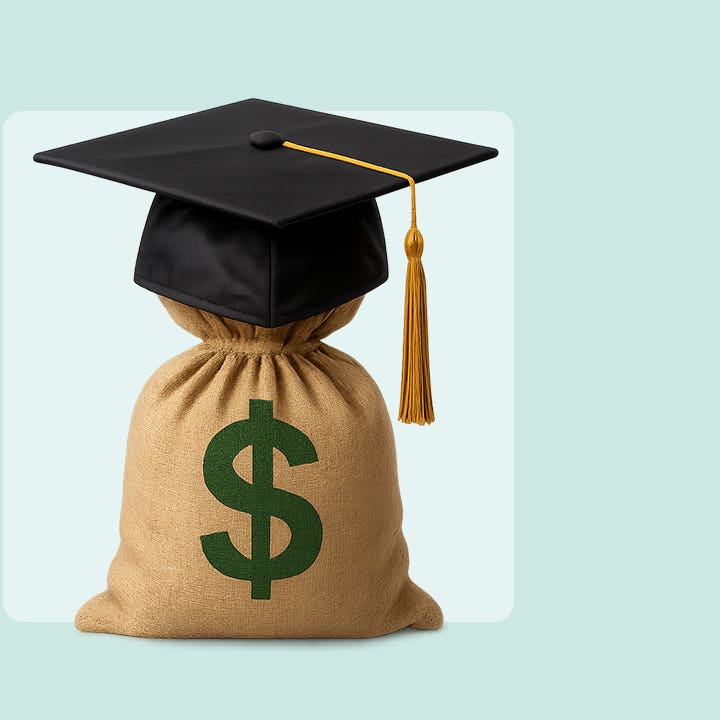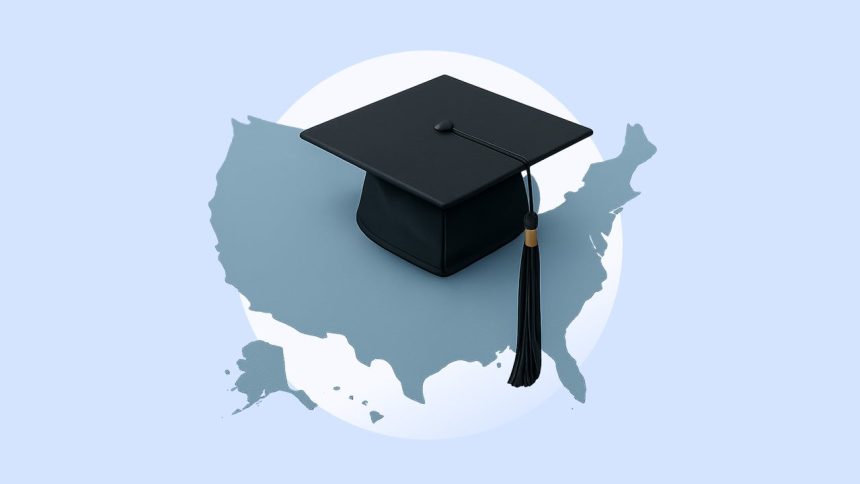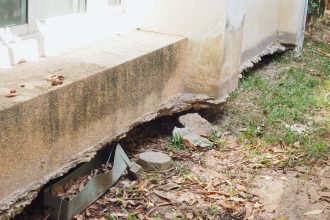Like a bar that wants to close at 2 a.m., the Education Department is urging student loan borrowers to switch from SAVE — the most generous of the income-driven repayment plans for federal student loans.
Yes, ending SAVE’s interest-free forbearance is tantamount to last call. Except in this case, borrowers don’t just pick up their tab — their outstanding balance is going to increase suddenly and significantly.
Unfortunately, it affects federal loan-holders nationwide.
How we arrived at the end of the SAVE forbearance
The Education Department announced July 9 that federal loans enrolled in SAVE would start accruing interest on Aug. 1. That means that, while payments aren’t immediately due, approximately 8 million borrowers in distress — the very audience SAVE was meant to serve — will see their balance start growing.
This could mean the country’s existing student loan default crisis will only get worse if borrowers don’t make a plan before payments start coming due, perhaps as soon as winter 2025. Here’s how we got here:
July 2024
The Biden Administration implements the interest-free forbearance later than planned due to a group of states challenging the repayment plan’s legality.
October 2024
The Biden Administration extends the interest-free forbearance.
February 2025
A federal court blocks SAVE and forgiveness under Income-Contingent Repayment and Pay As You Earn, preceding a similar district court action in April.
July 2025
The Trump Administration announces the end of the interest-free forbearance, urges SAVE enrollees to switch to Income-Based Repayment (IBR).
Which states’ borrowers will see interest right the most?
Since the end of the penalty-free SAVE forbearance means the resumption of interest charges, let’s review where interest will accrue the fastest, monthly and annually.
States where borrowers will see the most interest accrue
Borrowers across 11 states will see at least $300 in interest accrue per month onto their balance — or $3,600 per year — until they exit SAVE or they’re forced to switch to another plan.
|
State |
Monthly interest |
Annual interest |
| District of Columbia |
$434 |
$5,208 |
| Maryland |
$361 |
$4,331 |
| Georgia |
$324 |
$3,883 |
| California |
$321 |
$3,847 |
| New York |
$316 |
$3,791 |
| Illinois |
$314 |
$3,770 |
| Virginia |
$314 |
$3,772 |
| New Jersey |
$309 |
$3,712 |
| Florida |
$308 |
$3,695 |
| Delaware |
$306 |
$3,674 |
| Hawaii |
$303 |
$3,632 |
| Source: Student Borrower Protection Center (SBPC) | ||
States where borrowers will see less interest accrue
Borrowers residing in seven states will face monthly interest charges of up to $250.
| State | Monthly interest | Annual interest |
| Iowa |
$233 |
$2,796 |
| North Dakota |
$235 |
$2,817 |
| West Virginia |
$240 |
$2,876 |
| South Dakota |
$242 |
$2,902 |
| Indiana |
$250 |
$2,996 |
| Oklahoma |
$250 |
$2,999 |
| Wisconsin |
$250 |
$3,002 |
| Source: SBPC | ||
Mass forgiveness is dead. The Big Beautiful Bill passed. What’s next?
We’re watching three key battlegrounds that will determine the future for student loan borrowers.
Read more
3 Problems the end of SAVE will cause for borrowers nationally
We already knew that, coincidentally or not, student loan delinquency is worst in states that voted for President Trump in the 2024 election. The end of SAVE doesn’t help borrowers residing in any state, regardless of whether it’s red or blue.
Besides losing their interest-free forbearance, SAVE Plan borrowers will also face three big problems.
1. Higher monthly payments
As mentioned, if you’re enrolled in SAVE, your loans have already started to accrue interest again, but you don’t have a payment due, at least as of September 2025. Once the bills start rolling in, however, you’ll undoubtedly face higher minimum payments.
The reason for the higher payments is that SAVE called for just 5 percent of your discretionary income for undergraduate loans (or 10 percent for graduate or professional loans, or a weighted average if you have both) — and IBR’s minimum dues equate to 10 percent of your discretionary income. That means payments could double if you borrowed strictly for an undergraduate degree.
Still, it’s a positive that, among the many provisions of the so-called Big Beautiful Bill (BBB), you’ll have the option to move to IBR at all. Borrowers who take out new federal loans after July 1, 2026 won’t have access to IBR and will be forced into the new Repayment Assistance Plan, or RAP.
“And so it’s not as dire as it could have been,” says University of Chicago public policy professor Lesley J. Turner.
Even RAP, which is designed for lower-income borrowers, would result in higher-than-SAVE monthly dues — $2,929 higher, in fact, annually for degree-holders, according to a June analysis by the SBPC.

What to know about your evolving federal student loan repayment options
The Big Beautiful Bill’s provisions will cause a reckoning for borrowers nationwide.
Read more
2. Longer route to time-based forgiveness
One of SAVE’s more innovative features was a shorter route to forgiveness for borrowers with lower debt amounts. If and when you exit SAVE — either because interest has started to accrue, or because the Education Department will bounce you from the plan soon enough — your road to relief could become longer.
|
Plan |
Time to forgiveness |
|
SAVE (undergraduate loans) |
|
|
SAVE (graduate loans) |
|
|
IBR (loans borrowed before July 1, 2014) |
|
|
IBR (loans borrowed after July 1, 2014) |
Turner says she’s concerned about the impact on students who borrowed for an undergraduate degree and left school, perhaps without a degree or much debt.
“And this was specifically intended to overcome the concerns that had been raised that the low-balance borrowers — the dropouts who are at a high risk of default — were being discouraged from considering IBR because of the 20-year timeline,” Turner says.
“So, they will no longer have that 10-year or 15-year timeline, but they will still be able to get into one of these older IBR plans and have the 20-year timeline. So, it’s not as bad for them as it will be for future borrowers.”

Why finishing college could help solve the student loan crisis
Improving college completion could reduce education debt default rates, Mark Kantrowitz argues.
Read more
3. Continued uncertainty, for now
Before and since the Trump Administration took office, federal student loan borrowers have sought more clarity, less confusion. Trust us, we asked them.
The end of the SAVE interest-free forbearance — and the beginning of the end of SAVE itself — only muddies the waters further, at least for now.
Here’s what we know: While still standing for now, SAVE is likely to end well before July 1, 2028, if the timeline of the Trump Administration’s student loan policy is any indication. That’s when all federal loan borrowers must be enrolled in the plans left in place or created by the BBB.
In the meantime, Education Secretary Linda McMahon has urged SAVE borrowers to switch to IBR. After all, the Standard plan might not be affordable and RAP isn’t yet available.
| Plans for new loans borrowed before July 2026 | Plans for new loans borrowed after July 2026 |
|
What to do if you’re still enrolled in SAVE
If we boil it down to an either-or choice, the choice is clear. In part, that’s because being in the SAVE forbearance program, with or without paused interest, is a true purgatory: You won’t make progress toward whittling down your balance or programs like Public Service Loan Forgiveness (PSLF).
|
Consider switching from SAVE if |
Consider staying in SAVE if |
|
|
For more detail, review Bankrate contributor Mark Kantrowitz’s guide on handling the end of SAVE.
Why we ask for feedback
Your feedback helps us improve our content and services. It takes less than a minute to
complete.
Your responses are anonymous and will only be used for improving our website.
Help us improve our content
Read the full article here














